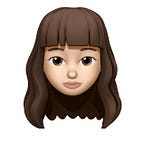SYSO- Sell Your Stuff Online: UI/UX Case Study
A Little Background
It was the beginning of October and college was about to end. I was switching from Botany to UI/UX design, which I realized was my calling.
I had prepared myself for the industry and now I needed a job, and for that, a portfolio. So I started working on one. I had a rough idea of how my portfolio is going to look like. So it was time to give it a shape.
I took the idea of making a resell app for college students, for my project.
The Project-
1.Overview
Imagine this situation: Abhay is a young guy who has just entered college. Upon entering one of the biggest challenges he had to face was to arrange the materials as in books, laptop, some furniture etc. to get started. The budget was a problem. It was too heavy on the pocket to buy all those things brand new.Also he didn’t exactly know what he will be needing.
Rishi is a final year guy. He is moving out of his college in a few days. When it’s time to pack, he looks around the room which he has practically turned into his home by now. He wonders how is he going to pack all those things, a majority of chunk he don’t even need.
Now what if we could provide a platform where Abhay could buy the stuff and Rishi could sell all of the things he didn’t need. It’s a win-win for both!
2.Idea
That’s where the app comes in picture. We have to bring the buyers and sellers on a single platform. It’s convenient, easy, saves time as well as money.
3.Problem statement
4.Understanding the problem
- The app was meant for a specific demographic,i.e., college students
- An app of this kind does not exist in India.
- The key idea was that this app was buying and selling. So the work has to be done around that.
5.User and Audience
Specifically college going students. Age 17–26 roughly.
Getting Started
- The first thing I did was to check similar apps to sort of get a direction.
- Read Case studies of similar apps, the coutloot case study( https://medium.muz.li/ux-case-study-of-coutloot-c2c-buy-sell-platform-fcb4370a524) and a few others(I forgot to save the links ;_;)proved to be very useful.
Setting the Tone
Since I did not had real data to work with, I decided to check a few re-commerce apps to see how they are doing with the UX and design.
I found some similarities while going through those apps and decided to point down the key features that was common in every app
- A sell button as FAB
- A location feature enabled since a user won’t go too far to purchase or sell.
- All the sell-able items at one place without much categorization, with search bar at the top to get specific search result.
- The user is both buyer and seller on the app so the layout had to be made accordingly
I came up with some rough wireframes after the research
Creating:
- Home
I decided to go for a simple design since there was going to be too much content throughout the app. The home page was kept simple with 4 items display on default. User can scroll down to see more products. For each box I kept a basic photo with description. I Kept the price before the product name since it was a resell app(money matters!). Below the description I added the day when the item was posted, giving users an idea of how old the post is .Since the displayed items were not categorized I kept a search button at the top. For the navigation bar I went with five button navigation for the most important tasks so it’s convenient for user to go through the app directly from the home screen.
2. Buy
I did quite a few iterations for this screen particularly. There were lot of ways to go about it. I kept the product description page full screen. The photos gave an idea of product condition so it was important for it to be clearly visible. Hence, I kept it in about 40% of the screen. I went with two call to action button at the bottom(make an offer/chat). The user can directly chat to the seller if he likes the product or can offer for a price which he thinks is apt.
3. Sell
Selling is one of the main functions of the app. I ditched the FAB for this button after a few iterations but kept it at the center . To sell a product all one has to do is upload photos and add description and it’s done.
4. Profile Section
The profile section is where the user info. is kept. At the top there is a header and profile section plus name and details. The emoji at the end of name was sort of a reward system to let other users know about the level of experience of seller on the app,i.e., new user, occasional user,frequent user etc. At the home page there is an option to save on the product one likes so in the profile section I made a tab where they can go through all the option they have saved. In the My items section the user’s active post is visible. The sold one’s can be seen scrolling down.
Conclusion and lesson learnt:
- There was a lack of real data to work from so I had to go with intuition at certain places, real data would definitely have helped in making a better decision.
- I constantly kept taking feedback with designers and non designers that helped me understand a general point of view and the specifics of design as well.
- I learnt a lot about making design decisions throughout this entire journey.
